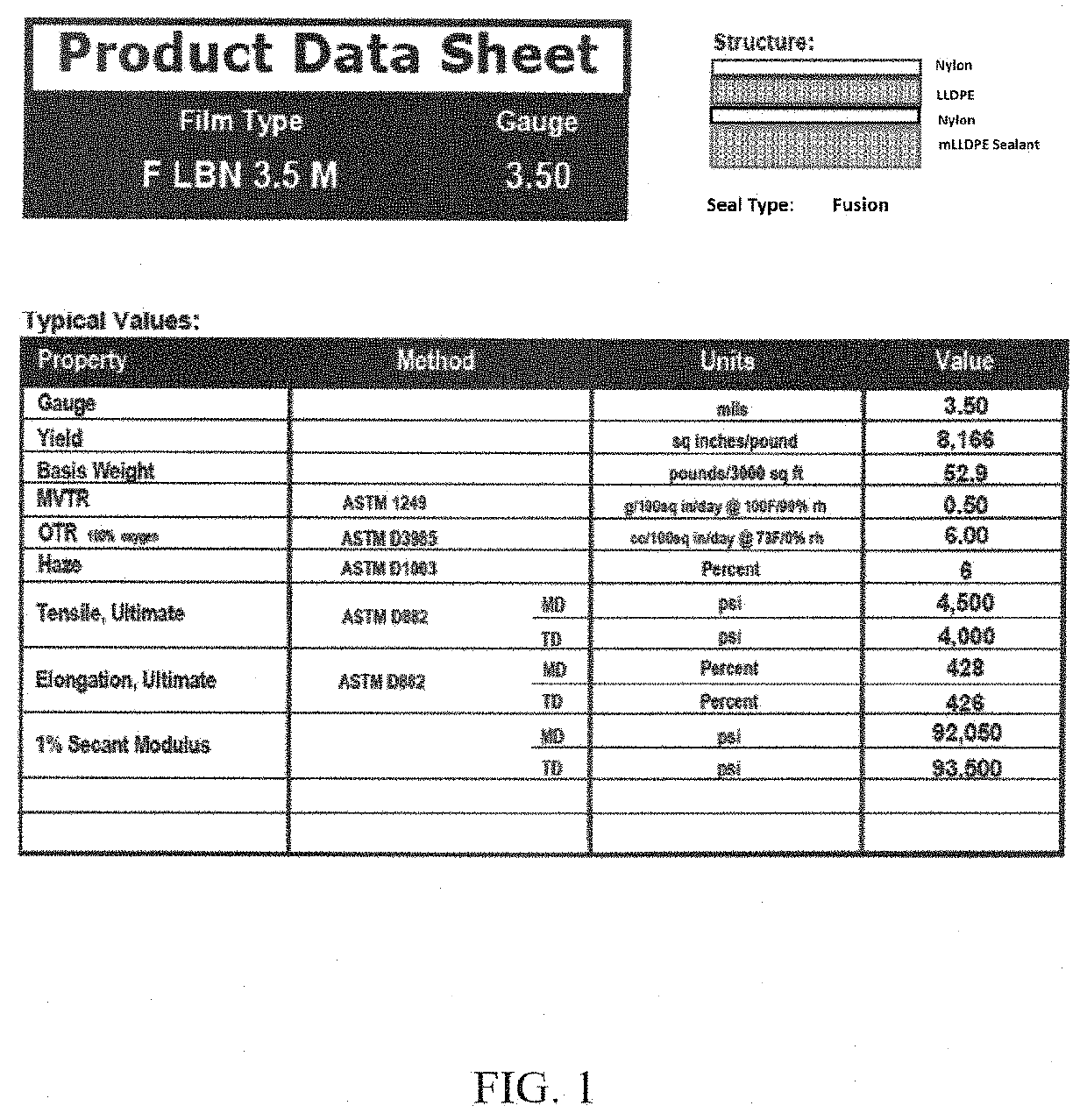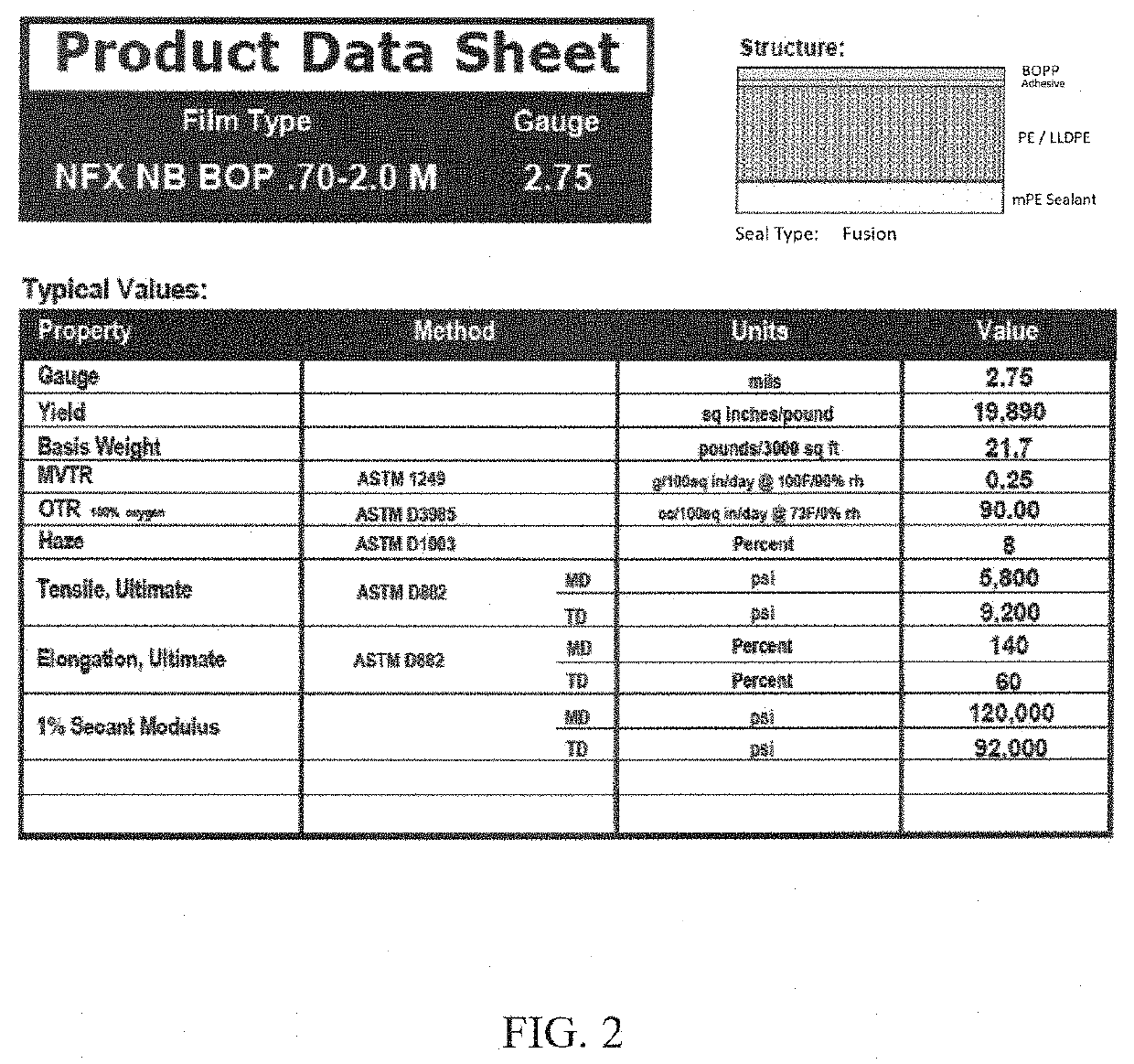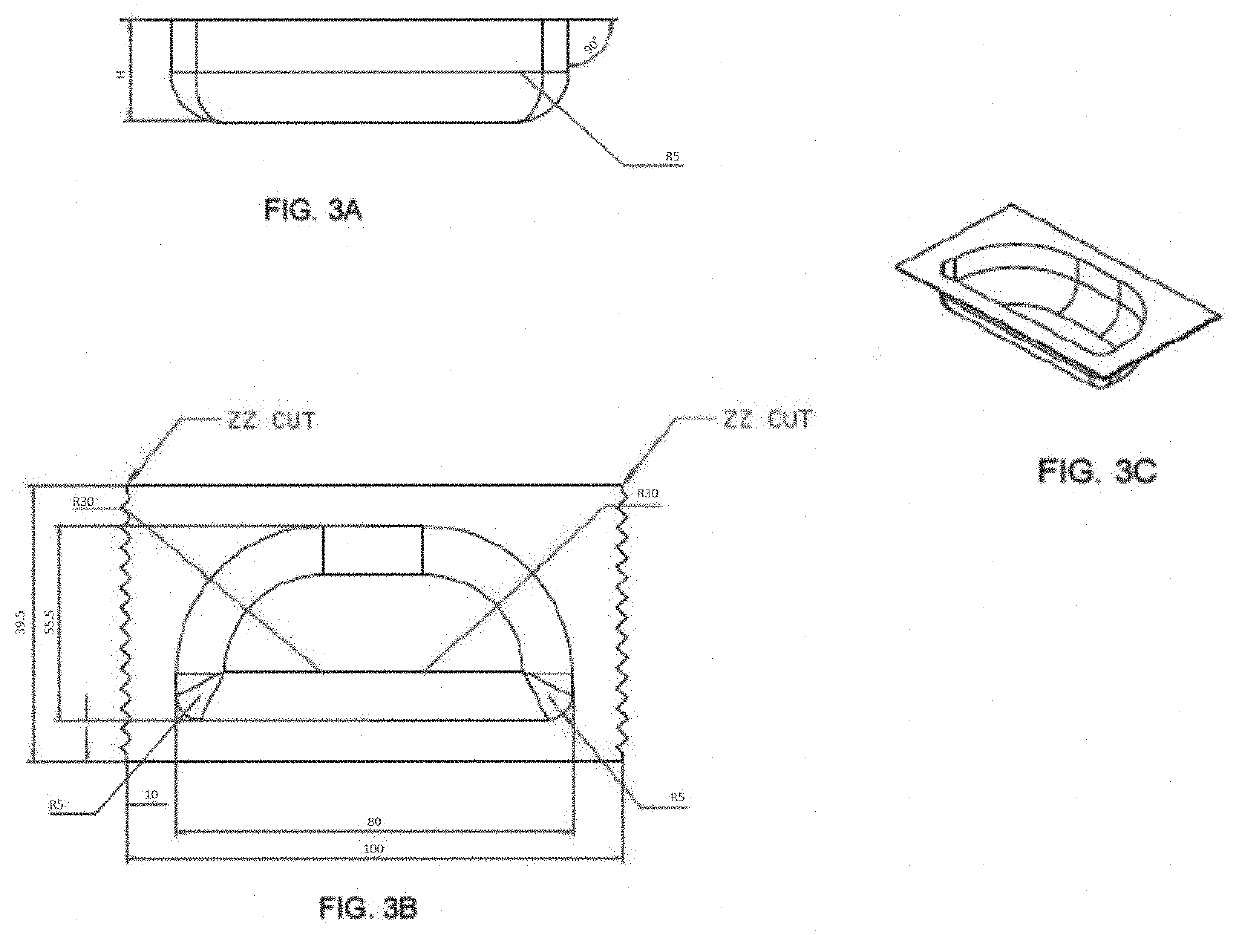Packaging and method for plant matter
a technology for plant matter and packaging, applied in the field of plant matter packaging and method, can solve the problems of overall waste, plant matter harvested for human or animal consumption is susceptible to natural decay, and is susceptible to degradation or deterioration, so as to prolong the shelf life of fresh plant matter products and reduce the rate of its degradation or deterioration
- Summary
- Abstract
- Description
- Claims
- Application Information
AI Technical Summary
Benefits of technology
Problems solved by technology
Method used
Image
Examples
example 1
n of Shelf-Life of Cannabis Flower in Specialized Packaging
[0063]The shelf-life for cannabis flower was evaluated against various storage parameters, with ambient air (Ziploc® bag), with specialized packaging under vacuum, with and without UV exposure, and room temperature or elevated temperature conditions. In addition, storage under refrigeration (4° C.) and freezer conditions (−20° C.) were also considered. For the study, three key quality factors were used to assess the product stored under these conditions: cannabinoid concentration (CN), terpene concentrations (TP), and water activity or moisture analysis (WA). The sample and testing matrix are shown below in Table 1.
[0064]Results from this testing are compared to data collected for an initial sample, collected at time zero, to monitor changes over time.
TABLE 1Sample and Testing MatrixPackagingTemperatureUV Exposure1 month2 months3 monthsZiploc ® BagambientlightCN, TP, WACN, TP, WACN, TP, WAVacuum PackagingambientlightCN, TP, ...
PUM
| Property | Measurement | Unit |
|---|---|---|
| Permeability | aaaaa | aaaaa |
| Concentration | aaaaa | aaaaa |
| Ratio | aaaaa | aaaaa |
Abstract
Description
Claims
Application Information
 Login to View More
Login to View More - R&D
- Intellectual Property
- Life Sciences
- Materials
- Tech Scout
- Unparalleled Data Quality
- Higher Quality Content
- 60% Fewer Hallucinations
Browse by: Latest US Patents, China's latest patents, Technical Efficacy Thesaurus, Application Domain, Technology Topic, Popular Technical Reports.
© 2025 PatSnap. All rights reserved.Legal|Privacy policy|Modern Slavery Act Transparency Statement|Sitemap|About US| Contact US: help@patsnap.com



